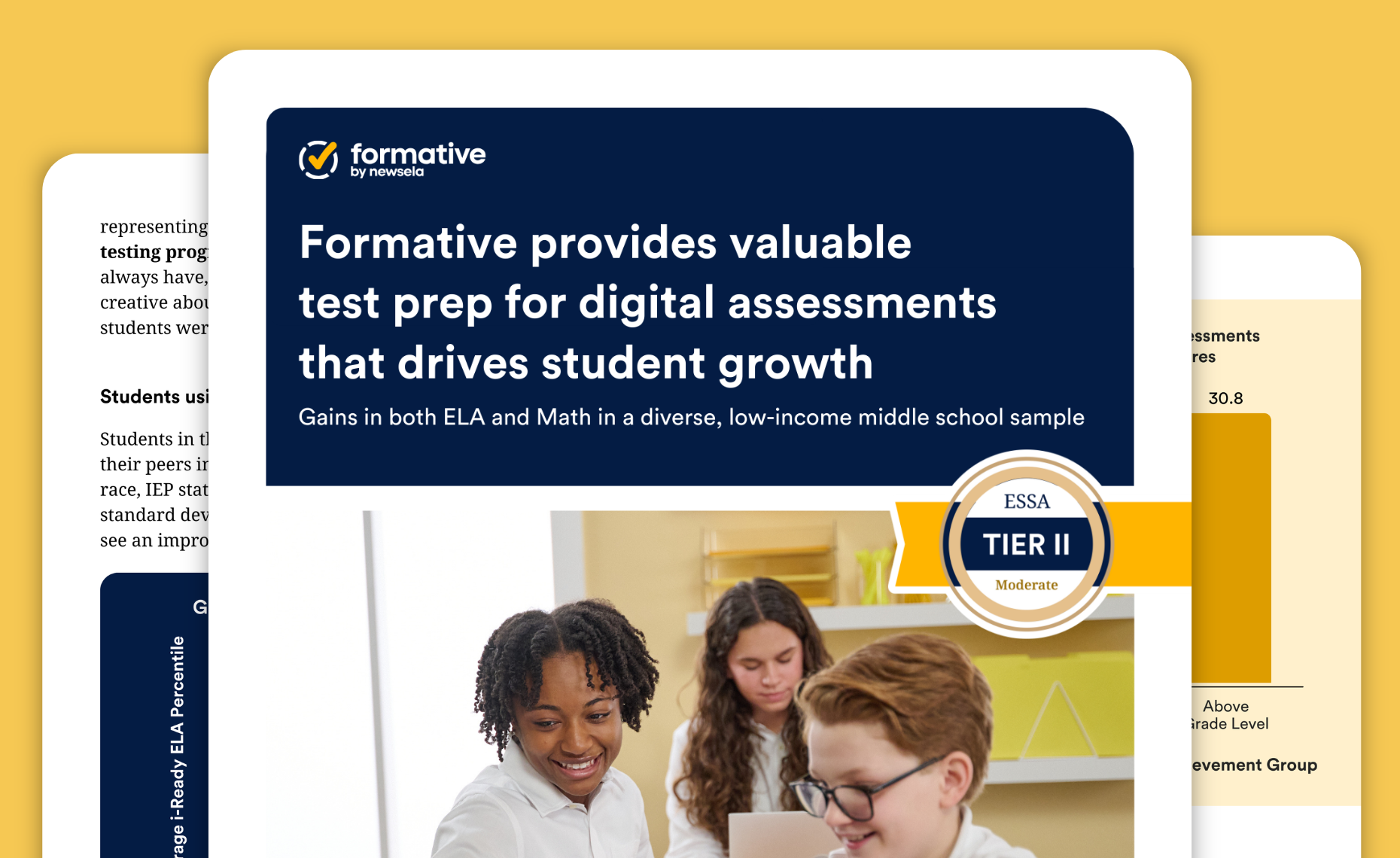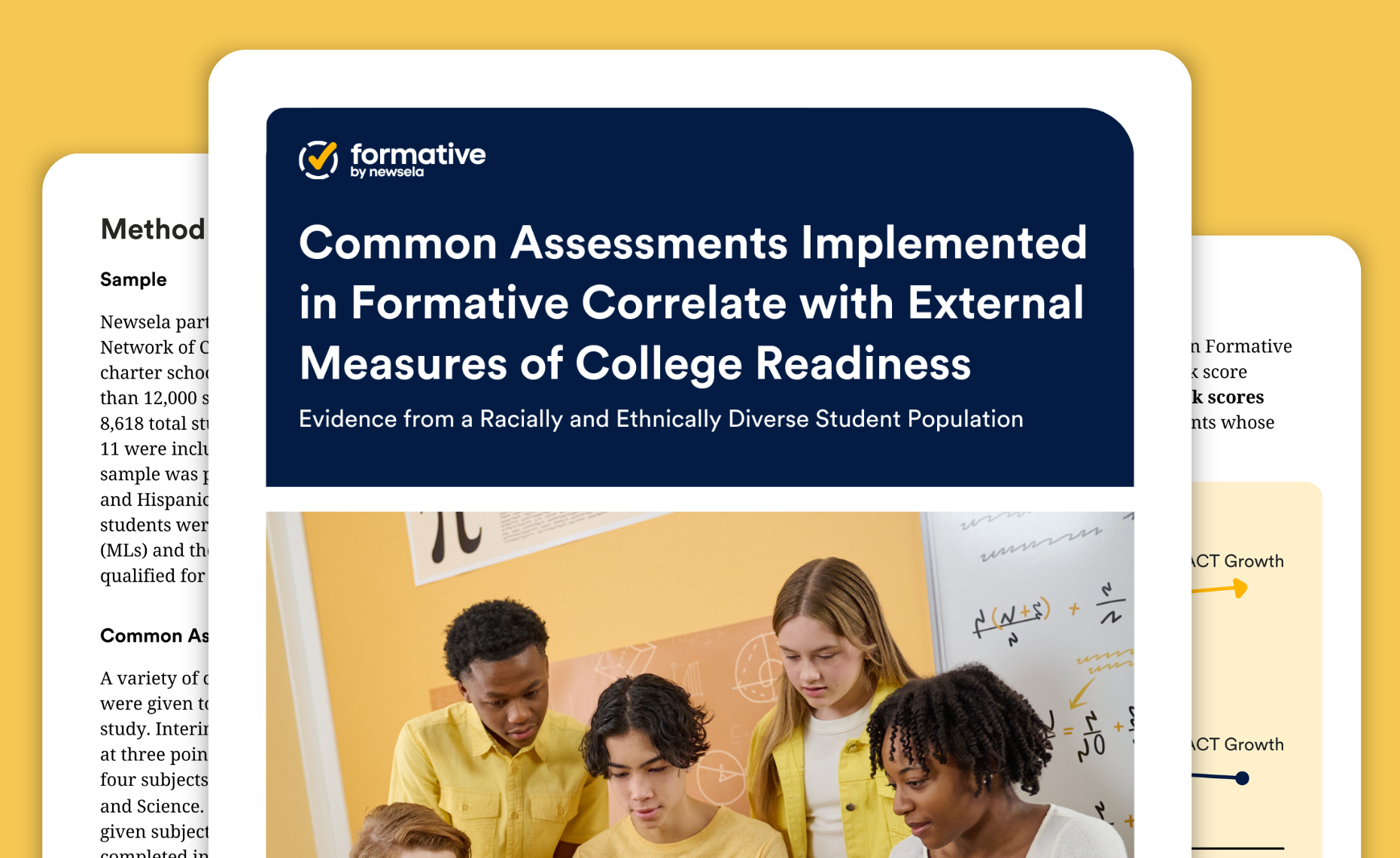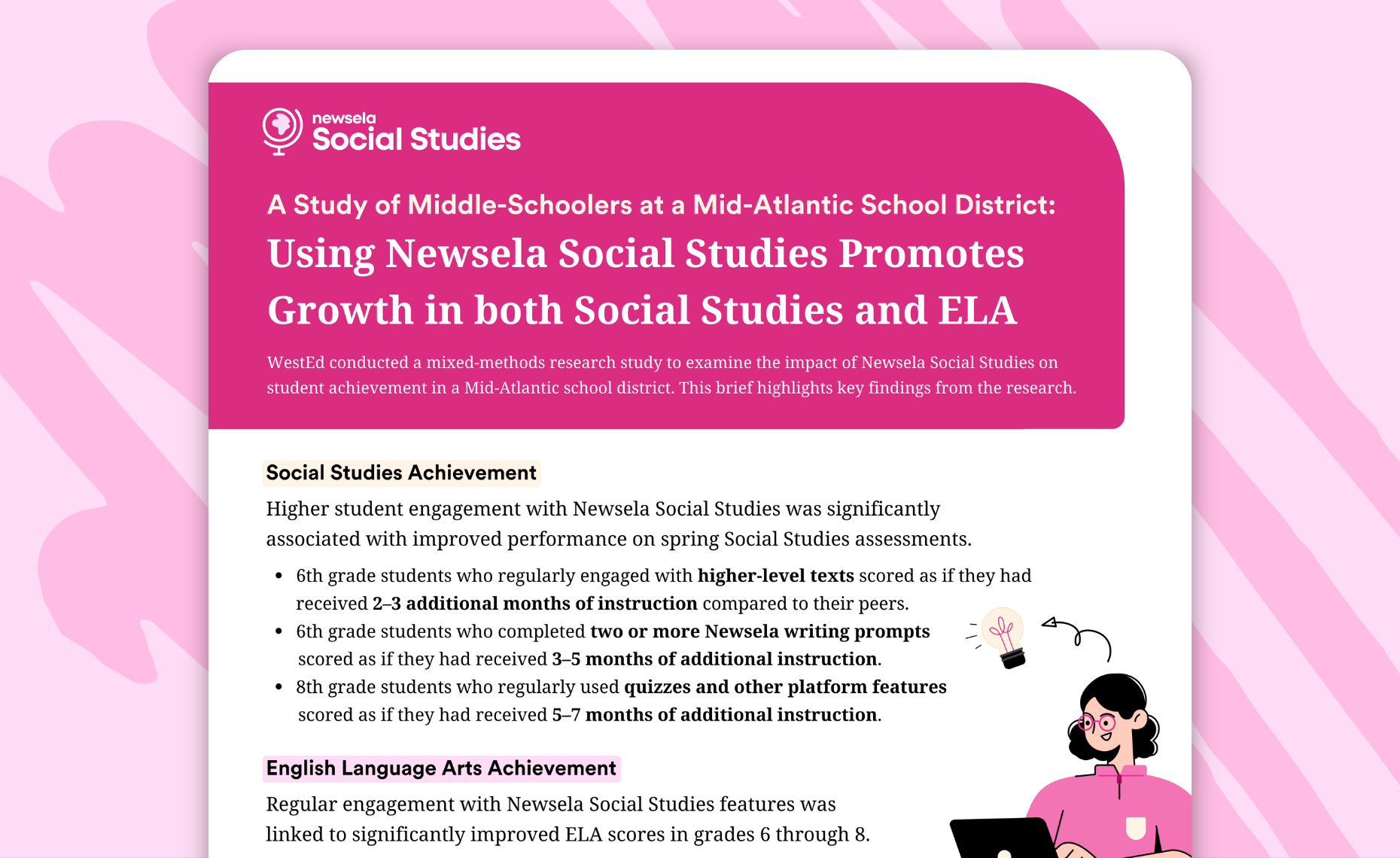No items found.
Products
 Products Overview
Products OverviewNewsela products are purpose-built to unlock student motivation, inspire teachers, and drive long-lasting learning outcomes.
Knowledge & Skill-building
Newsela ELA
Drive meaningful student outcomes with content-rich literacy instruction
Newsela Social Studies
Prepare the next generation of citizens with relevant and responsive materials
Newsela STEM
Integrate science and literacy to inspire the scientist in every learner
Newsela Writing
Help students become better writers with real-time, rubric-aligned feedback
Daily Instruction & Assessment
Formative
Where assessment accelerates growth
Resources
Everything you need to be successfully while using the Newsela suite of products.
Solutions
See how Newsela’s products help you build a solid educational foundation so you can engage, support, and grow every learner.
About
Newsela launched in 2013 with a bold mission: Meaningful classroom learning for every student. Today, our team constantly strives to deliver powerful solutions that inspire our users.













